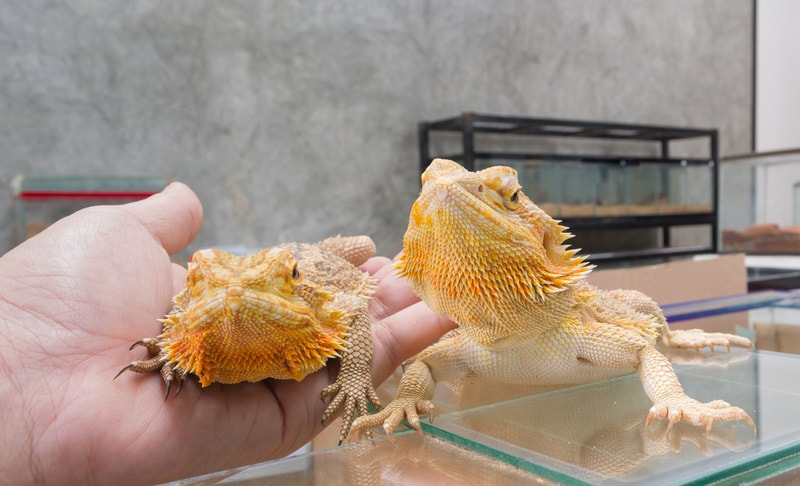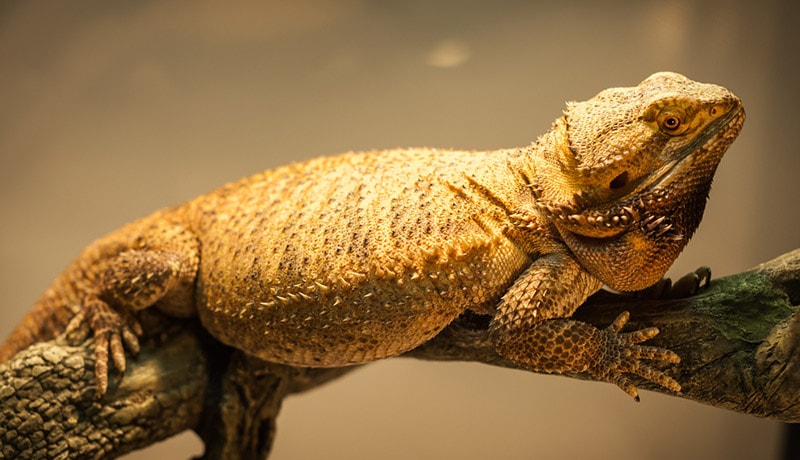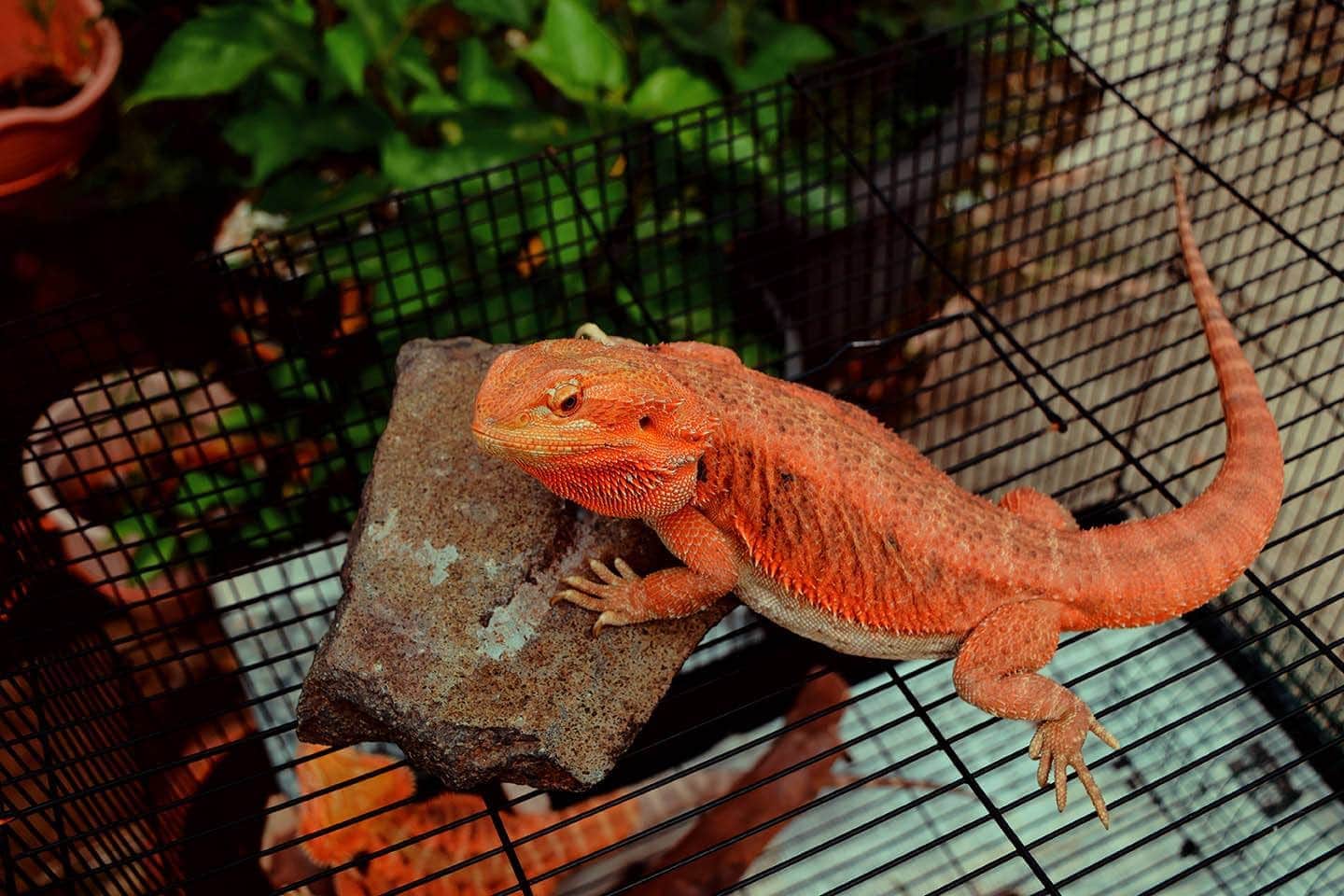Can Bearded Dragons Eat Dandelions? Vet-Reviewed Facts & FAQ
Updated on
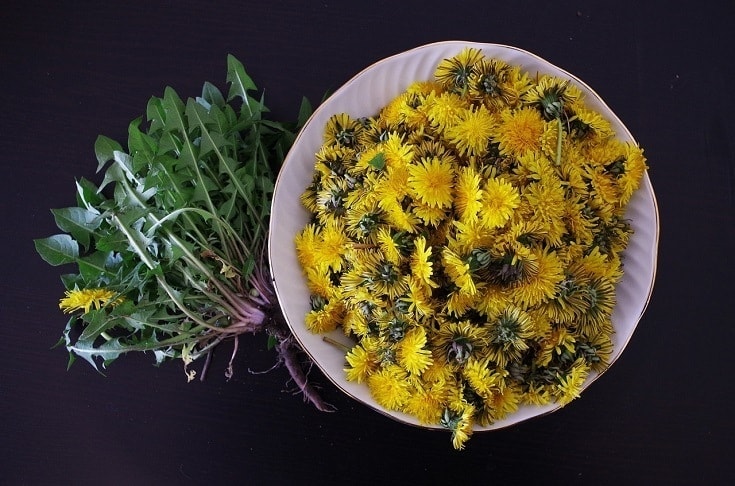
Click to Skip Ahead
If you’ve recently adopted a Bearded Dragon, you probably have a million questions about how to care for your new pet correctly. One of the most important is what to feed your Bearded Dragon. You’ll be pleased to know that you can indeed give dandelions to your new pet, and the flowers and leaves are loaded with vitamins, minerals, and other nutrients.
If you want to learn more about feeding your Bearded Dragon dandelions, including how many dandelions they can eat, how to prepare them, and any drawbacks the plant has, keep reading below.
Which Parts of the Dandelion Are Edible?
Almost every part of the dandelion is edible except for the stem. It has a milky, bitter substance inside that most animals find unpalatable. The petals of the dandelion flower can be plucked off and given to your Bearded Dragon. The leaves of the dandelion are edible, too, especially the young leaves that grow before the flower blooms.
The roots of the dandelion plant can also be eaten, but they’re the most difficult to cultivate, clean, and feed to your Beardie. For that reason, most people don’t give dandelion roots to their Bearded Dragons. Whichever part of the dandelion you feed your Beardie, you should wash it thoroughly with fresh water first.
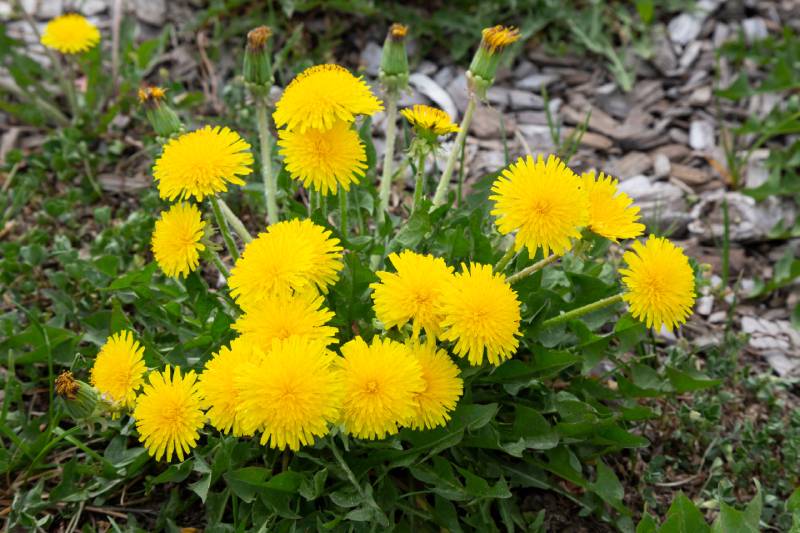
What Nutritional Benefits Do Dandelions Provide Bearded Dragons?
As mentioned earlier, dandelions offer a wide range of nutrients that benefit your Beardie’s health. The highest density of nutrients is found in the leaves, but there are several of them in the flower’s petals.
- Calcium
- Phosphorous
- Vitamins A, C, and K
- Magnesium
- Potassium
- Iron
- Antioxidants
- Beta carotene
Amazingly, a cup serving of dandelion greens contains 103 mg calcium!
Can Your Beardie Eat Dandelion Seed Puffs?
While there is nothing inherently toxic about the fluffy seed puffs of the dandelion plant, they offer no specific health benefits. Plus, they’re dry and difficult to eat, which is why there’s no good reason to feed them to your Beardie.
Are Dandelion Stems Toxic to Bearded Dragons?
If you’ve snapped the head off a dandelion, you might’ve seen a milky white substance flow out of the stem. While this is not a palatable substance, the good news is that it isn’t toxic.
What is it, exactly? You might be surprised to know that it’s latex! About 20,000 plant species make this natural form of latex to defend against insects and other vermin. This natural latex is a building block of rubber, like what you find being used in many household products.
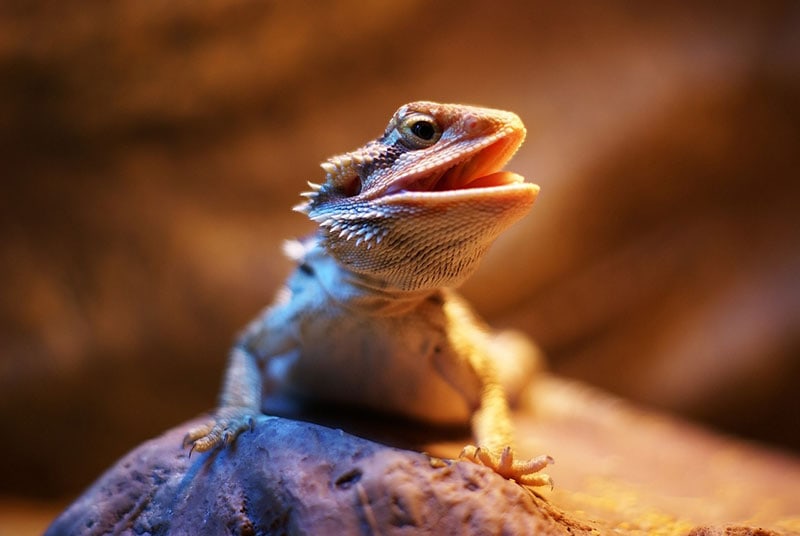
What Are the Drawbacks of Feeding Dandelions to Your Bearded Dragon?
While no parts of the dandelion plant are toxic for Bearded Dragons, there is a high concentration of oxalates in the dandelion leaves. The problem with oxalates is that they bind to certain minerals, including calcium. If your Bearded Dragon were to eat a huge number of dandelions, it could cause kidney stones and other kidney problems.
Another small problem with dandelions is that, because they’re typically found in lawns across America, most are sprayed with pesticides and herbicides. These chemicals are toxic to your Bearded Dragon. Many Bearded Dragon owners who feed their pets dandelions from their yards don’t spray chemicals for that reason.
How to Feed Dandelions to Your Bearded Dragon
Like any type of fresh, leafy greens, you should wash dandelions thoroughly before serving. This will remove any chemicals, dirt, and other nonessential debris. Next, you should strip the dandelion leaves from the stems and chop them into smaller pieces. You can do the same with the yellow petals. However, one thing to note about the dandelion petals is that they’re much more filling than the leaves. Also, they have a higher level of natural sugars and can ruin your Bearded Dragon’s appetite.
It’s best to serve your Bearded Dragon dandelions with other green, leafy greens at the same time. That way, the oxalates in the dandelion plant won’t get the chance to absorb calcium and cause kidney stones.
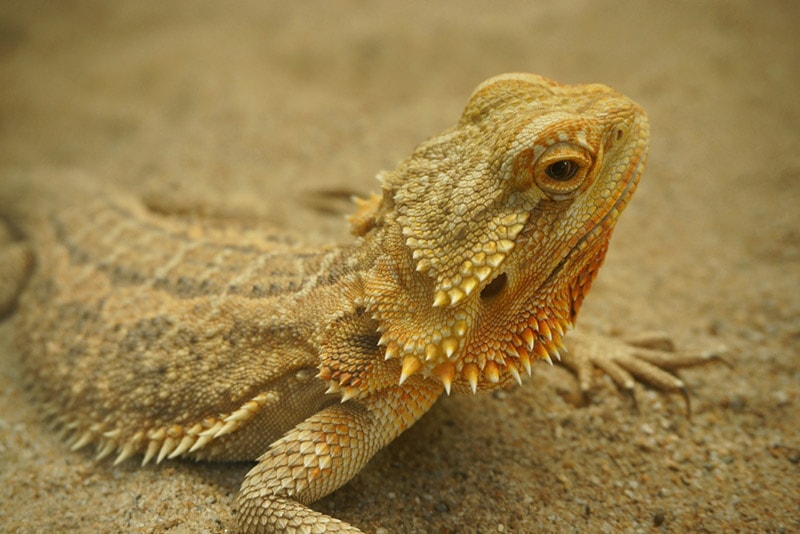
How Often Can Bearded Dragons Eat Dandelions?
Although it isn’t a perfectly balanced food and should not be fed to your Beardie as its sole food source, you can give them dandelions practically every day in moderation. When mixed in with your Bearded Dragon’s regular food, dandelions add a fantastic boost of vitamins, minerals, and other nutrients.
What Makes Dandelions a Good Food Choice for Bearded Dragons?
Besides the fact that dandelions contain vitamins, minerals, and other nutrients, they also have an excellent ratio of calcium to phosphorus. This is essential because if a certain food or plant has too much phosphorus and not as much calcium, it can cause metabolic bone disease (MDB), which can be fatal for your Beardie.
Dandelions have a 2.9:1 calcium-to-phosphorus ratio, making them perfect for your Bearded Dragon and providing plenty of calcium and enough phosphorus to be extremely healthy.
Final Thoughts
Although many consider them a weed and a pest, the dandelion plant is neither to Bearded Dragons. They’re packed with vitamins and minerals and quite healthy. Dandelions make a perfect food to feed your Bearded Dragon in moderation and will provide your pet with the nutrients they need to thrive and survive.
Maybe the best part about dandelions is that if you refrain from spraying pesticides and herbicides on your lawn, you can harvest them for free for several months of the year! Just be sure to clean the plants thoroughly and chop the leaves and flower petals into smaller bits, and you’ll be all set!
You may also be interested to know:
- Can Bearded Dragons Eat Caterpillars? Vet-Reviewed Nutrition Facts & FAQ
- Can Bearded Dragons Eat Spiders? Vet-Reviewed Nutrition Facts & FAQ
Featured Image Credit: Ajale, Pixabay


